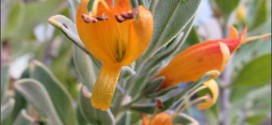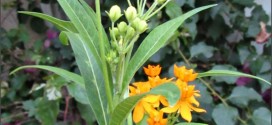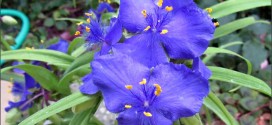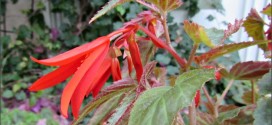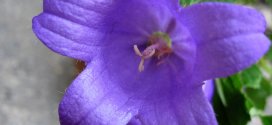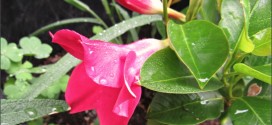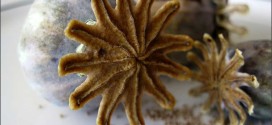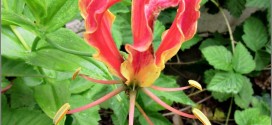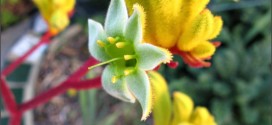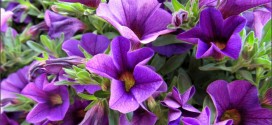Emu Bush is a great addition to a drought-tolerant garden in Sunnyvale. Emu Bush Fuchsias (genus Eremophila) are Australian shrubby native plants and there are over two hundred varieties known. The name Eremophila means ‘desert lover’ and derives from the Greek eremos (desert) and phileo (to love). The fruits are eaten by emus, which disperse the seeds in their droppings. …
Read More »Flowers
Asclepias – Silky Mix
One of over two hundred varieties of Asclepias, ‘Silky Mix’ stands out for its beautiful alternating deep red and gold colored blooms. Blooming mid Summer through early Fall, ‘Silky’, like most Asclepias prefers sunny, dry locations and does well in substandard soil. A tender perennial in some zones and annual in others, ‘Silky Mix’ is a beautiful addition to any …
Read More »Tradescantia x andersoniana ‘Sweet Kate’
‘Sweet Kate’ is a compact, clump-forming, hybrid spiderwort that is noted for its unique yellow foliage. It typically grows to 12” tall. Three-petaled, purplish-blue flowers (to 1.5” diameter) accented by contrasting yellow stamens are borne in terminal clusters (umbels) atop stiff stems. Numerous flower buds form in each cluster, but individual flowers open up only a few at a time, …
Read More »Begonia boliviens s. ‘Santa Cruz Sunset’
The Santa Cruz Sunset begonia has dramatic angled petals. These plants fall into the tropical and subtropical category of perennials, growing well in U.S. Department of Agriculture plant hardiness zones 6 through 11. Many varieties with ornamental leaves and blossoms grow well outside in USDA zones 10 and 11, while hardy begonias survive winters in USDA zones 6 through 9 …
Read More »Bellflower
With their nodding heads, Campanula, or bellflower plants, are pretty perennial flowers. Bellflowers will bloom heaviest in June and July but can delight you with flowers all the way into October in some areas. The plant is native to many of the U.S. regions where cool nights and moderate temperatures prevail, creating ideal conditions for growing bellflowers. They require full …
Read More »Mandevilla vine
Among the garden’s most elegant vines, mandevilla offers stunning trumpet-shape flowers in shades of pink, white, or red. It’s the perfect plant for creating a lush, tropical look. Mandevilla is usually grown as an annual, though it can be overwintered indoors in a bright spot. Note: All parts of this plant are poisonous. First planted in 2014. I relocated the …
Read More »Invasion of the Pods
When the petals fall away and the leaves dry up, you are left with seed pods. These are from asiatic poppies (Danish Flag poppies). Marie captured this image in 2010.
Read More »Gloriosa Lily
The exotic yellow and red blossoms of the gloriosa lily (Gloriosa superba), also known as the glory lily, flame lily and climbing lily, cover the plant’s 3- to 8-foot-tall vine. Native to Africa and Asia, gloriosa lilies are generally available in two colors: the red “Rothschildiana” and yellow “Lutea.” A tender perennial, this tropical vine thrives in the warm summer …
Read More »Kangaroo Paw
Calibrochoa
Formerly known as million bells, calibrachoa is an easy to grow, low-maintenance plant that displays masses of bell-shaped, petunia-like blooms from spring until the first light frost. The blooms cover long, cascading branches that make the plant ideal for containers or hanging baskets. Sun-loving calibrachoa reaches heights of 6 to 10 inches and displays a rainbow of bright colors, depending …
Read More »